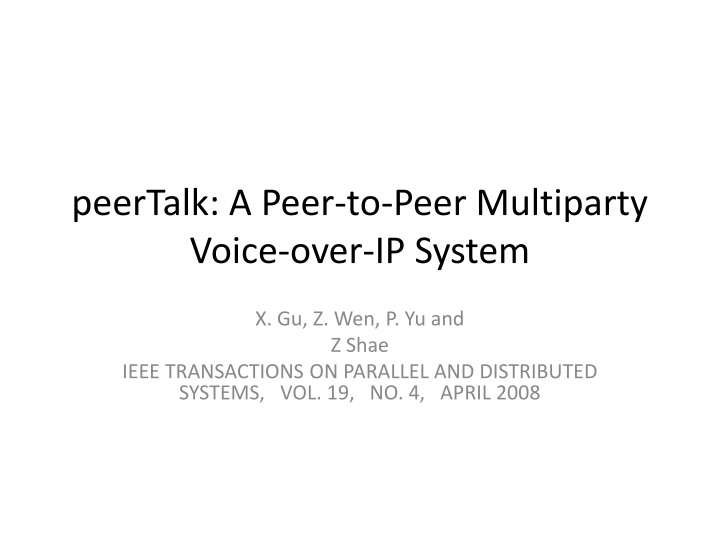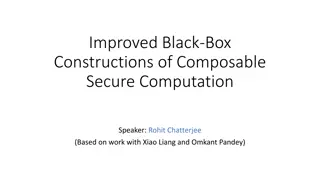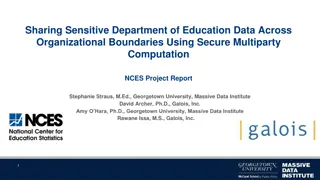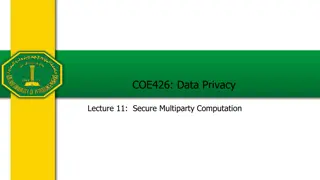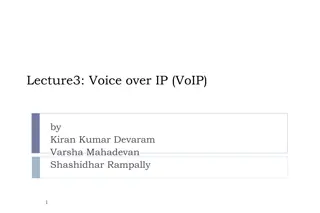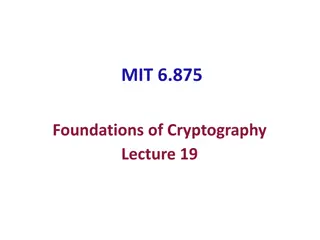PeerTalk: A Peer-to-Peer Multiparty Voice-over-IP System
This paper discusses "PeerTalk," a peer-to-peer multiparty voice-over-IP system proposed by Gu, Wen, Yu, and Shae. The system aims to facilitate voice communication among multiple parties in a decentralized manner. The study, published in IEEE Transactions on Parallel and Distributed Systems in April 2008, presents the design and implementation of PeerTalk, highlighting its unique features and benefits. The authors delve into the technical aspects of the system, its architecture, and the mechanisms employed to ensure efficient voice communication over IP networks. Overall, the paper provides valuable insights into the development of peer-to-peer communication systems for voice calls, contributing to the ongoing research in this field.
Download Presentation

Please find below an Image/Link to download the presentation.
The content on the website is provided AS IS for your information and personal use only. It may not be sold, licensed, or shared on other websites without obtaining consent from the author.If you encounter any issues during the download, it is possible that the publisher has removed the file from their server.
You are allowed to download the files provided on this website for personal or commercial use, subject to the condition that they are used lawfully. All files are the property of their respective owners.
The content on the website is provided AS IS for your information and personal use only. It may not be sold, licensed, or shared on other websites without obtaining consent from the author.
E N D
Presentation Transcript
peerTalk: A Peer-to-Peer Multiparty Voice-over-IP System X. Gu, Z. Wen, P. Yu and Z Shae IEEE TRANSACTIONS ON PARALLEL AND DISTRIBUTED SYSTEMS, VOL. 19, NO. 4, APRIL 2008
Introduction Present the design and implementation of the P2P MVoIP system called peerTalk Decoupled distributed processing (DDP) model for MVoIP services has two phase mixing phase distribution phase PeerTalk is fully distributed and self-organizing
System model Each peer sends heartbeat messages to its neighbors to indicate its liveness and current stream processing performance Each peer maintains the routing cost (network delay) to every other peer The mixing and distribution tree are dynamically constructed
Service Provisioning Protocol At a session beginning, all participants run an election protocol to select the best rendezvous point as the root of mixing tree and distribution tree During runtime, the system adaptively grows or shrinks the mixing tree based on the dynamic mixing workload changes
Mixer Splitting Use the moving average value of the total audio stream number at time ?, denoted by ??,?
Mixer Migration PeerTalk performs dynamic mixer migration to continuously optimize the audio mixing process Migrate a mixer from a peer host to one of the neighbors if the neighbor is better in CPU, memory, and network bandwidth resources Better network connection (less delay and packet lost)
Experimental evaluation Implemented a prototype of the peerTalk system and the PlanetLab Internet testbed Generate a 5,120-node power-law graph to represent the physical network The delay of each physical link is in the range of [8, 12] ms The bandwidth of each network link is in the range of [256k, 10M] bps
Experimental evaluation Use two different models to emulate the speaking activities Explicit ON/OFF model each active speaker alternates between ON periods and OFF periods Real VoIP conversation data use real telephony conversations consist of 500 pairs of conversations for a total of 1,000 voice streams. Each conversation session lasts 300 seconds
Conclusion P2P MVoIP system can achieve better scalability and cost-effectiveness by adaptively and efficiently distributing the stream among different peers Propose decoupled stream processing model Provide mixer splitting/merging/migration algorithms Propose lightweight backup schemes to make peerTalk resilient to peer failures/departures
